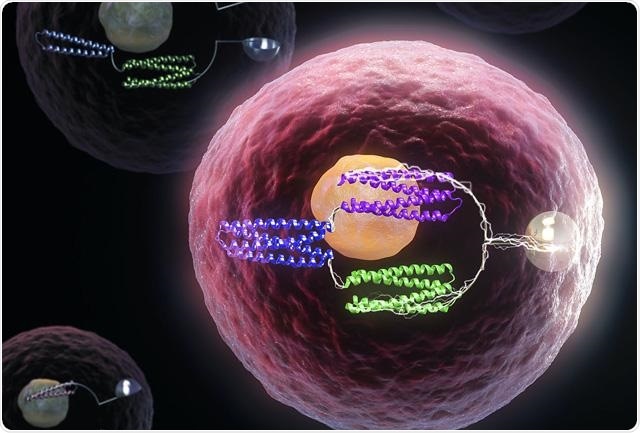Researchers are currently using the same fundamental tools that enable the working of computers to manipulate life at the molecular level.
The developments in this area of research could be applicable to synthetic biology and future medicines.

In this conceptual illustration, living cells contain protein AND gates that have been designed to detect multiple signals to become bioluminescent. Image Credit: MolGraphics.
In a study published recently in the journal Science, a research team from the University of Washington School of Medicine has reported the development of artificial proteins that serve as molecular logic gates. Similar to their electronic equivalents, these tools can be employed to control the behavior of highly complex systems.
The researchers demonstrated that the new designer proteins can regulate gene expression within human T-cells. This advance could enhance the durability and safety of next-generation cell-based therapies.
Bioengineers have made logic gates out of DNA, RNA and modified natural proteins before, but these are far from ideal. Our logic gates built from de novo designed proteins are more modular and versatile, and can be used in a wide range of biomedical applications”
David Baker, Study Senior Author and Professor of Biochemistry, University of Washington School of Medicine
Baker is also the director of the Institute for Protein Design.
Logic gates, whether they are biological or electronic, sense and respond to signals in predefined ways. AND gate, which is one of the simplest of all, produces output only if one input AND another exist.
For instance, while typing on a keyboard, when the Shift key AND the A key are pressed, an uppercase letter A is produced. The goal of logic gates produced from biological parts is to bring this level of control into bioengineered systems.
When the correct gates operate within living cells, inputs like the existence of two different molecules, or one present and not the other, can make a cell to generate a certain output, like inhibiting or activating a gene.
The whole Apollo 11 Guidance Computer was built from electronic NOR gates. We succeeded in making protein-based NOR gates. They are not as complicated as NASA’s guidance computers, but nevertheless are a key step toward programming complex biological circuits from scratch.”
Zibo Chen, Study Lead Author and Graduate Student, University of Washington School of Medicine
A patient’s own immune cells isolated for combating against cancer has worked for the treatment of specific forms of the disease. However, it has been difficult to target solid tumors with this CAR-T cell therapy approach.
According to the researchers, this is partly due to T cell exhaustion. Genetically modified T cells can fight only till they stop working. There could be another alternative to this process. The team of researchers from UW Medicine believes the activity of CAR T cells can be prolonged by using the protein logic gates that respond to exhaustion signals.
Longer-lived T cells that are better programmed for each patient would mean more effective personalized medicine.”
Zibo Chen, Study Lead Author and Graduate Student, University of Washington School of Medicine